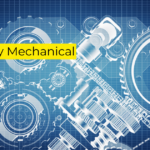The automotive sector has undergone a remarkable transformation since the advent of the first motor vehicles. From the early days of steam-powered carriages to the modern electric vehicles, innovation has been at the heart of this evolution. As consumers demand more efficient, safer, and environmentally friendly cars, manufacturers are increasingly focusing on advanced materials and manufacturing techniques to meet these expectations. A key area of focus has been aluminum-based castings in the automotive sector, which have become integral to producing lighter, more efficient vehicles.
Material innovation plays a pivotal role in the automotive industry’s ability to innovate and stay competitive. With stringent regulations on emissions and fuel efficiency, automakers are compelled to explore new materials that offer superior performance without compromising on cost. One of the most significant developments in this area has been the adoption of aluminum-based castings in the automotive sector, which provide an excellent balance of lightweight properties and structural integrity.
Aluminum-based castings in the automotive sector have emerged as a critical component in modern vehicle manufacturing. By utilizing various aluminum alloys, manufacturers can produce parts that are not only lighter than traditional steel components but also offer enhanced durability and performance. This article delves into the various aspects of aluminum-based castings in the automotive sector, their benefits, applications, and the future trends shaping their use in the automotive sector.
The Rise of Aluminum in Automotive Manufacturing
Historical Use of Aluminum in Vehicles
The use of aluminum in automotive manufacturing is not a recent phenomenon. It dates back to the early 20th century when luxury car makers experimented with aluminum bodies for its lightweight properties. However, it was during the latter half of the century that aluminum began to gain widespread acceptance, especially in high-performance and racing cars where weight reduction was crucial.
Advantages of Aluminum Over Traditional Materials
Aluminum offers several advantages over traditional materials like steel. Its low density makes it ideal for reducing the overall weight of vehicles, which in turn improves fuel efficiency and reduces emissions. Additionally, aluminum is highly resistant to corrosion, which enhances the longevity of automotive components. The material’s excellent thermal conductivity also helps in better heat management, a critical factor for engine and brake systems.
Increasing Demand for Lightweight Materials
With global efforts to reduce carbon emissions, the demand for lightweight materials in the automotive industry has surged. Aluminum-based castings have become a cornerstone in this effort, as they offer the dual benefits of weight reduction and structural strength. Automakers are increasingly replacing heavier steel parts with aluminum components, a trend that is expected to continue as the industry moves towards more fuel-efficient and electric vehicles.
Also Read: Low Speed Vehicle SC
Understanding Aluminum-Based Castings
Definition and Process of Aluminum-Based Castings
Aluminum-based castings refer to the process of shaping aluminum into desired forms by pouring molten aluminum into molds. Once the aluminum cools and solidifies, it takes the shape of the mold, resulting in components that are precise and durable. This method is widely used in the automotive sector for creating complex parts with high dimensional accuracy.
Types of Aluminum Alloys Used in Castings
Various aluminum alloys are used in the casting process, each offering unique properties. Common alloys include 356, 319, and 6061, known for their excellent mechanical properties and corrosion resistance. The choice of alloy depends on the specific requirements of the part being cast, such as strength, ductility, and thermal conductivity.
Common Aluminum Casting Techniques
Die Casting
Die casting is a popular method for producing high-volume aluminum parts with excellent surface finish and dimensional accuracy. It involves forcing molten aluminum into a mold cavity under high pressure. This technique is commonly used for manufacturing engine components, transmission housings, and other critical automotive parts.
Sand Casting
Sand casting is a versatile and cost-effective method that uses sand molds to shape aluminum parts. It is suitable for producing large and complex components, such as engine blocks and cylinder heads. While sand casting offers flexibility in design, it typically requires more post-processing than die casting.
Permanent Mold Casting
Permanent mold casting, also known as gravity casting, involves pouring molten aluminum into a reusable mold. This method is ideal for producing medium to high-volume parts with consistent quality. Permanent mold casting is commonly used for creating components like wheels, suspension parts, and brake drums.
Benefits of Aluminum-Based Castings in the Automotive Sector
Weight Reduction and Fuel Efficiency
One of the most significant benefits of aluminum-based castings is their contribution to weight reduction. Aluminum’s low density makes it an ideal material for replacing heavier steel components, leading to lighter vehicles. This reduction in weight translates to improved fuel efficiency, as less energy is required to propel the vehicle. Consequently, cars with aluminum parts consume less fuel, reducing both operating costs and greenhouse gas emissions.
Enhanced Durability and Strength
Aluminum alloys used in castings are known for their excellent strength-to-weight ratio. This means that despite being lightweight, aluminum components can withstand significant stress and strain. The enhanced durability of aluminum parts makes them ideal for critical applications, such as engine and transmission systems, where reliability is paramount. Moreover, aluminum’s resistance to wear and fatigue ensures that these components have a long service life.
Improved Thermal Conductivity and Heat Resistance
Aluminum-Based Castings in the Automotive Sector have gained prominence due to aluminum’s high thermal conductivity, making it an excellent material for automotive components that require efficient heat dissipation. For instance, engine parts and brake systems benefit from aluminum’s ability to quickly transfer heat away from critical areas, preventing overheating and improving overall performance. Additionally, certain aluminum alloys offer excellent heat resistance, making them suitable for applications in high-temperature environments.
Corrosion Resistance and Longevity
Another key advantage of aluminum-based castings is their resistance to corrosion. Unlike steel, which can rust over time, aluminum forms a natural oxide layer that protects it from the elements. This property is particularly valuable in automotive applications, where components are often exposed to harsh environmental conditions. The corrosion resistance of aluminum ensures that parts maintain their integrity and appearance over time, reducing maintenance costs and extending the vehicle’s lifespan.
Applications of Aluminum-Based Castings in Automobiles
Engine Components
Cylinder Heads and Blocks
Aluminum-based castings are widely used in manufacturing cylinder heads and engine blocks. The material’s light weight helps reduce the overall engine mass, improving vehicle dynamics and fuel efficiency. Additionally, aluminum’s excellent thermal conductivity aids in efficient heat management, ensuring optimal engine performance and longevity.
Pistons and Connecting Rods
Pistons and connecting rods are critical components in an internal combustion engine, responsible for converting fuel energy into mechanical motion. Using aluminum alloys for these parts offers the advantage of reduced reciprocating mass, which enhances engine efficiency and responsiveness. The durability and strength of aluminum also contribute to the reliability and longevity of these components.
Transmission and Drivetrain Components
Gearbox Housings
Aluminum-based castings are increasingly used in gearbox housings, where weight reduction is crucial for improving fuel efficiency. The material’s excellent strength-to-weight ratio ensures that these housings can withstand the stresses of high-performance applications. Furthermore, aluminum’s corrosion resistance and thermal properties make it an ideal choice for this critical component.
Transmission Casings
Transmission casings, which encase the gears and transmission fluids, benefit from the lightweight and durable properties of aluminum. The use of aluminum castings in transmission casings helps reduce the overall weight of the drivetrain system, enhancing vehicle performance and fuel economy. Additionally, aluminum’s heat dissipation capabilities help maintain optimal transmission temperatures.
Structural and Chassis Components
Suspension Systems
Aluminum-based castings are widely used in suspension systems, including control arms, subframes, and knuckles. The material’s lightweight nature contributes to reduced unsprung mass, improving ride quality and handling. Aluminum’s strength and durability also ensure that suspension components can withstand the rigors of daily driving and harsh road conditions.
Subframes and Crossmembers
Subframes and crossmembers are essential structural components that support the engine, transmission, and suspension systems. Using aluminum castings for these parts offers significant weight savings, which can improve the vehicle’s balance and agility. Moreover, the corrosion resistance of aluminum ensures that these components remain robust and reliable over the vehicle’s lifespan.
Body and Interior Parts
Wheels and Rims
Aluminum wheels and rims are a popular choice in the automotive sector due to their lightweight and aesthetic appeal. The use of aluminum-based castings in wheels not only enhances the vehicle’s appearance but also improves performance by reducing rotational mass. This reduction in weight leads to better acceleration, braking, and fuel efficiency.
Door Frames and Panels
Aluminum castings are increasingly used in door frames and panels, offering a lightweight alternative to traditional steel. The reduction in weight contributes to overall vehicle efficiency and reduces the strain on door hinges and mechanisms. Additionally, aluminum’s corrosion resistance ensures that these parts maintain their appearance and functionality over time.
Innovations and Future Trends in Aluminum-Based Castings
Advanced Casting Technologies
The development of advanced casting technologies has revolutionized the production of aluminum-based castings. Techniques such as vacuum-assisted casting and low-pressure die casting have improved the quality and precision of cast aluminum parts. These innovations allow for the creation of more complex and lightweight components, further enhancing the performance and efficiency of modern vehicles.
Integration of Additive Manufacturing
Additive manufacturing, commonly known as 3D printing, is making significant inroads in the automotive sector. This technology allows for the rapid prototyping and production of aluminum parts with intricate designs that would be challenging to achieve with traditional casting methods. The integration of additive manufacturing with aluminum-based castings offers the potential for custom, lightweight components that meet specific performance criteria.
Development of New Aluminum Alloys
Research and development in metallurgy have led to the creation of new aluminum alloys with enhanced properties. These advanced alloys offer improved strength, ductility, and thermal resistance, making them ideal for high-performance automotive applications. The ongoing development of new alloys continues to expand the possibilities for aluminum-based castings, enabling the production of lighter, stronger, and more efficient vehicle components.
Sustainability and Recycling of Aluminum Castings
As the automotive industry increasingly focuses on sustainability, the recyclability of aluminum has become a significant advantage. Aluminum can be recycled indefinitely without losing its properties, making it a highly sustainable material choice. The use of recycled aluminum in castings not only reduces the environmental impact of vehicle production but also lowers costs, as recycled material is less expensive than new aluminum.
Challenges and Limitations of Aluminum-Based Castings
Cost Considerations and Economic Factors
While aluminum offers numerous benefits, it is generally more expensive than traditional steel. The cost of raw materials and the complexities of the casting process can make aluminum-based components more costly to produce. However, the long-term benefits, such as fuel savings and reduced maintenance costs, often outweigh the initial investment.
Technical Challenges in Casting Processes
The casting of aluminum components presents certain technical challenges. For instance, in aluminum-based castings in the automotive sector, aluminum’s high thermal conductivity can lead to rapid cooling and solidification, which may result in defects such as porosity or incomplete filling of the mold. Advanced casting techniques and careful process control are necessary to overcome these challenges and ensure the production of high-quality components.
Balancing Performance and Cost Efficiency
Automakers must carefully balance the performance benefits of aluminum-based castings with cost considerations. While aluminum offers superior properties, the increased cost must be justified by the performance gains and consumer demand for lightweight, efficient vehicles. This balance is particularly important in mass-market vehicles, where cost efficiency is a key factor.
Case Studies: Success Stories in the Automotive Sector
Leading Automakers Utilizing Aluminum-Based Castings
Several leading automakers have successfully integrated aluminum-based castings into their vehicle designs. For example, Audi has extensively used aluminum in its Audi Space Frame (ASF) technology, significantly reducing the weight of its vehicles while maintaining structural integrity. Similarly, Ford has adopted aluminum-based castings for the body of its popular F-150 pickup truck, achieving substantial weight savings and improved fuel efficiency.
Notable Vehicles with Aluminum Components
Many iconic vehicles have benefited from aluminum-based castings. The Tesla Model S, known for its performance and efficiency, features an all-aluminum body and chassis, contributing to its impressive range and handling. Another example is the Jaguar F-Type, which uses aluminum extensively in its construction, providing a lightweight and agile driving experience. These vehicles showcase the versatility and advantages of aluminum-based castings in modern automotive design.
Environmental Impact and Sustainability
Reduction in Carbon Emissions
The use of aluminum-based castings contributes to a reduction in carbon emissions by enabling the production of lighter vehicles. Lighter cars require less energy to operate, resulting in lower fuel consumption and reduced greenhouse gas emissions. This benefit is particularly significant in the context of global efforts to combat climate change and reduce the automotive sector’s environmental footprint.
Recycling and Reusability of Aluminum
Aluminum’s recyclability is a major environmental advantage. Recycled aluminum requires only a fraction of the energy needed to produce new aluminum, making it an eco-friendly choice. The automotive industry increasingly incorporates recycled aluminum in the production of castings, contributing to resource conservation and reducing waste.
Life Cycle Assessment of Aluminum Castings
A comprehensive life cycle assessment of aluminum castings reveals their positive environmental impact. From raw material extraction to production, use, and end-of-life recycling, aluminum components offer significant energy savings and emission reductions compared to traditional materials. This holistic view underscores the importance of aluminum-based castings in achieving sustainable automotive manufacturing.
Conclusion
Aluminum-Based Castings in the Automotive Sector offer numerous benefits, including weight reduction, enhanced durability, improved thermal management, and corrosion resistance. These advantages contribute to better fuel efficiency, lower emissions, and overall improved vehicle performance. The versatility and recyclability of aluminum make it an ideal material for a wide range of automotive applications.
As the automotive industry continues to evolve, the role of Aluminum-Based Castings in the Automotive Sector is expected to grow. Advances in casting technologies, the development of new aluminum alloys, and the integration of additive manufacturing are poised to expand the possibilities for lightweight, high-performance components. Additionally, the increasing emphasis on sustainability will drive the demand for recyclable materials like aluminum.
Innovation is the cornerstone of progress in the automotive sector. The adoption of Aluminum-Based Castings in the Automotive Sector exemplifies how material science and manufacturing advancements can lead to more efficient, sustainable, and high-performing vehicles. As automakers continue to push the boundaries of what’s possible, aluminum will play a crucial role in shaping the future of the automotive industry.









